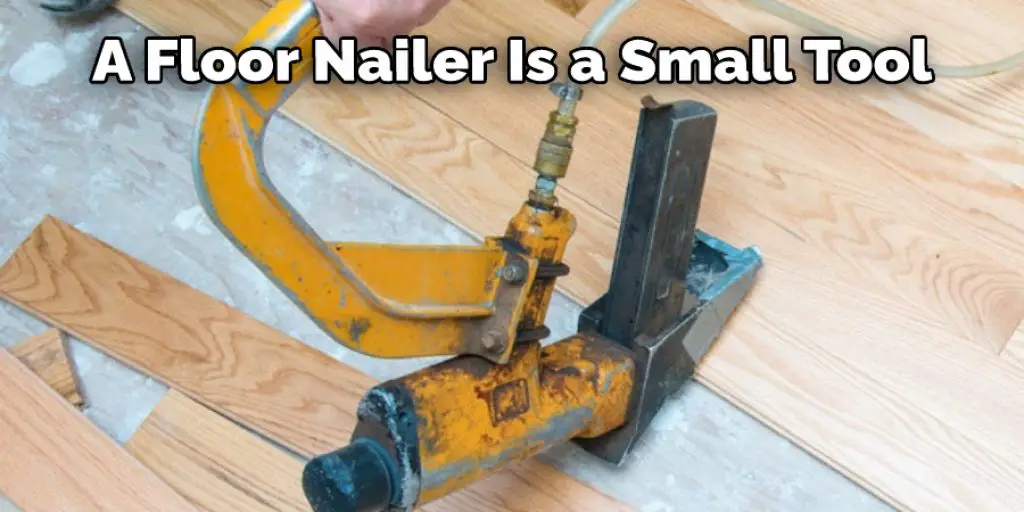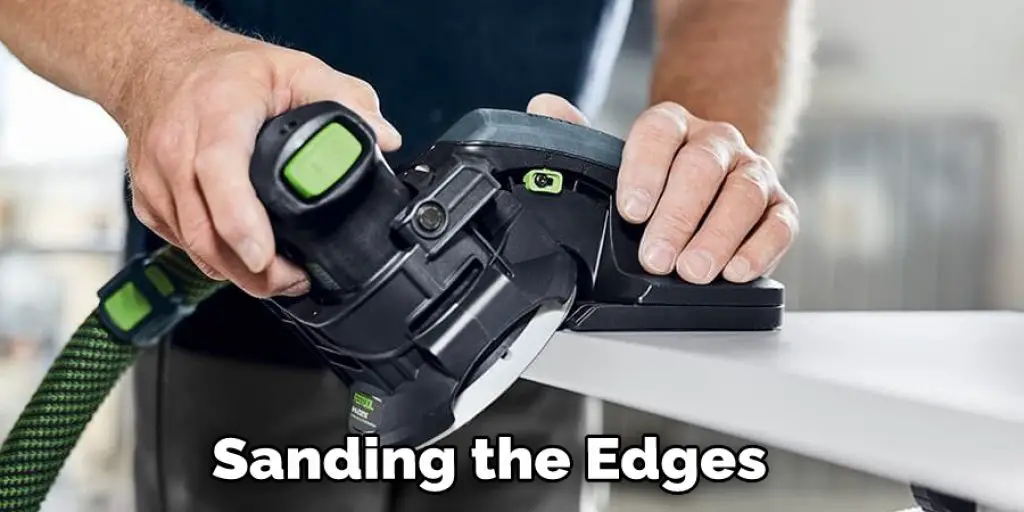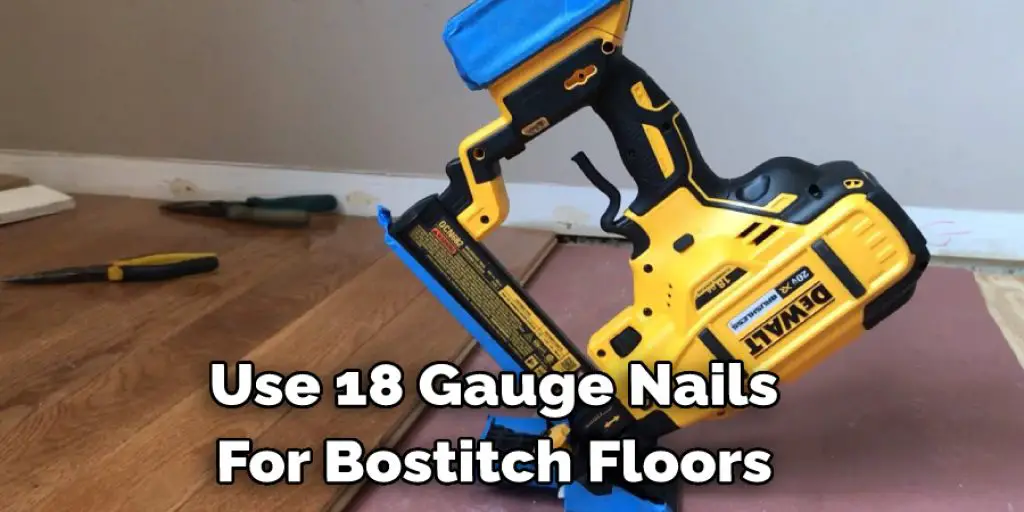The Bostitch floor nailer is one of the most popular models on the market. It comes in handy for so many projects, including laying down laminate floors and installing hardwood floors. What makes this model so great is that it has a long list of features to make your life easier.

You can adjust depth, set up to shoot nails at angles different than 90 degrees, and use an air regulator to help you get steady pressure. If you are looking for a reliable tool that won’t let you down when you need it most, then look no further than the Bostitch floor nailer! This article will explore some of its features and how to use a bostitch floor nailer.
What Is Floor Nailer?
A floor Nailer is a small tool used to fasten wooden boards together. To put it simply, the floor nailer shoots nails through the wood and into another piece of wood. It then sets the nails in place. Finally, it clamps tightly around a wire or plastic strip, which catches all of the shavings from where you’re nailing.

The most common floor nailers are pneumatic and gas-powered, which are ideal for an average home or business. It is quite easy to operate compared to other tools that require some level of skill. The nails are usually straight, though some models have angled heads for installation in tight corners. Most of the time, this is the only tool you need to set up your wood flooring.
If you want to use a floor nailer correctly, it is advised to hire a professional for the job. But there are some ways on how to make the process easier and safer.
Step By Step Guide How to Use a Bostitch Floor Nailer
Step One: Get the Area Ready
First, clear the area to be patched. Then, move anything or anyone out of your way as you will want to have room to maneuver. Make sure you never point a nailer at any person nearby, and if they are nearby, make sure that no shot that may ricochet off could hit them. If there is heavy furniture in place, then you will need to move that as well.
Step Two: Secure the Area
Ensure the area is secure, and there is no chance of anything falling on you as you work. There shouldn’t be any air conditioning or heating vents blowing on you either, as it may make the wood shift and move around while shooting nails. You should also make sure that the dust is not going to be a problem for you, so close off any air currents if possible.
Step Three: Measure and Mark the Area
Before you get started, measure out the area to make sure it’s clear of anything in your way. You will also want to take measurements on how much wood you will need to fill in the gaps. Make sure you take your measurements twice because it is easy to make a mistake and forget what is going where.
Step Four: Fill Any Holes or Cracks
If any holes or cracks need to be patched up, make sure you do this before anything else. Use wood filler or spackle as you would normally do to fill in any holes or cracks. Let this dry for a few hours, as it will be much easier to sand down if there is not a nail going through it.
Step Five: Sanding the Edges
If needed, sand the edges of the floor where the nails will be going into. You want to make sure that this is smooth and there will not be any splinters coming off when being nailed into. If the wood has been worn away by time or wear, you may want to consider replacing a few pieces of the flooring before nailing it down.

Can I Use Floor Nailer for Hardwood Floors?
No. Floor nailers are designed to install sub-flooring, not for use with hardwood flooring. In addition, hardwood floor nails must be driven in at an angle, and most floor nailer drives do not allow you to set the depth of drive or direction of drive. Therefore, the risk of damaging your beautiful new hardwood floors will likely outweigh the benefits that a floor nailer will provide.
How to Use Plywood and Subfloor with the Bostitch Floor Nailer?
Before beginning, make sure you read and understand all safety instructions and manuals for your Porter Cable PCC790LA Floor Nailer. Before using this tool, you must understand how to use it safely.
To use the floor nailer, first determine how many fasteners you will need for your project using the F-style guide on top of the tool. Once you know how many fasteners you will need, begin nailing down your plywood subflooring with the Porter-Cable Floor Nailer.
Frequently Asked Question
Can You Use a Nail Gun on Bostitch Flooring?
Nail guns are not intended for use on Bostitch flooring. They can damage the nails, which may cause them to pull out of the substrate or cause structural weakness in the product.
If you want to install your own nailer, then you should purchase a flooring nailer that is compatible with the Bostitch product line.
Can You Use Nails on Bostitch Flooring?
Nails can be used on a Bostitch flooring system. However, nails should not be hammered into the seams of the panels or between the planks because this could cause damage to the flooring.
Nails should only be driven in at the edges and ends of panels where it is intended that they are to be installed.
What Size Nails Should Be Used for Bostitch Flooring?
For Bostitch flooring, the recommended nail size is 8d or 10d.
The 8d nail is a long, narrow strip of metal with a head at one end and a short shank (a small piece of metal) at the other. The 10d nail has two round heads instead of one long one.
Can You Use 18 Gauge Nails for Bostitch Floors?
Yes, you can use 18 gauge nails for Bostitch floors. The nails should be made of a high-quality material such as stainless steel or titanium and must have a coating that is water-resistant and will not rust.

Nails used in flooring are different from those used in framing. Nails used in framing must have square shanks to make them stronger because they are being driven into the wood, while nails used in flooring need smooth shanks, so they glide easily into the plywood underneath.
Conclusion
The Bostitch floor nailer is a good investment for any homeowner who needs to put down wood floors. It’s easy to use and has great features that make it worth the money spent. If you are looking for an affordable option or want more information on this product, please feel free to contact us! We would be happy to answer your questions and help find the best solution for your needs. So now you know how to use a bostitch floor nailer.








